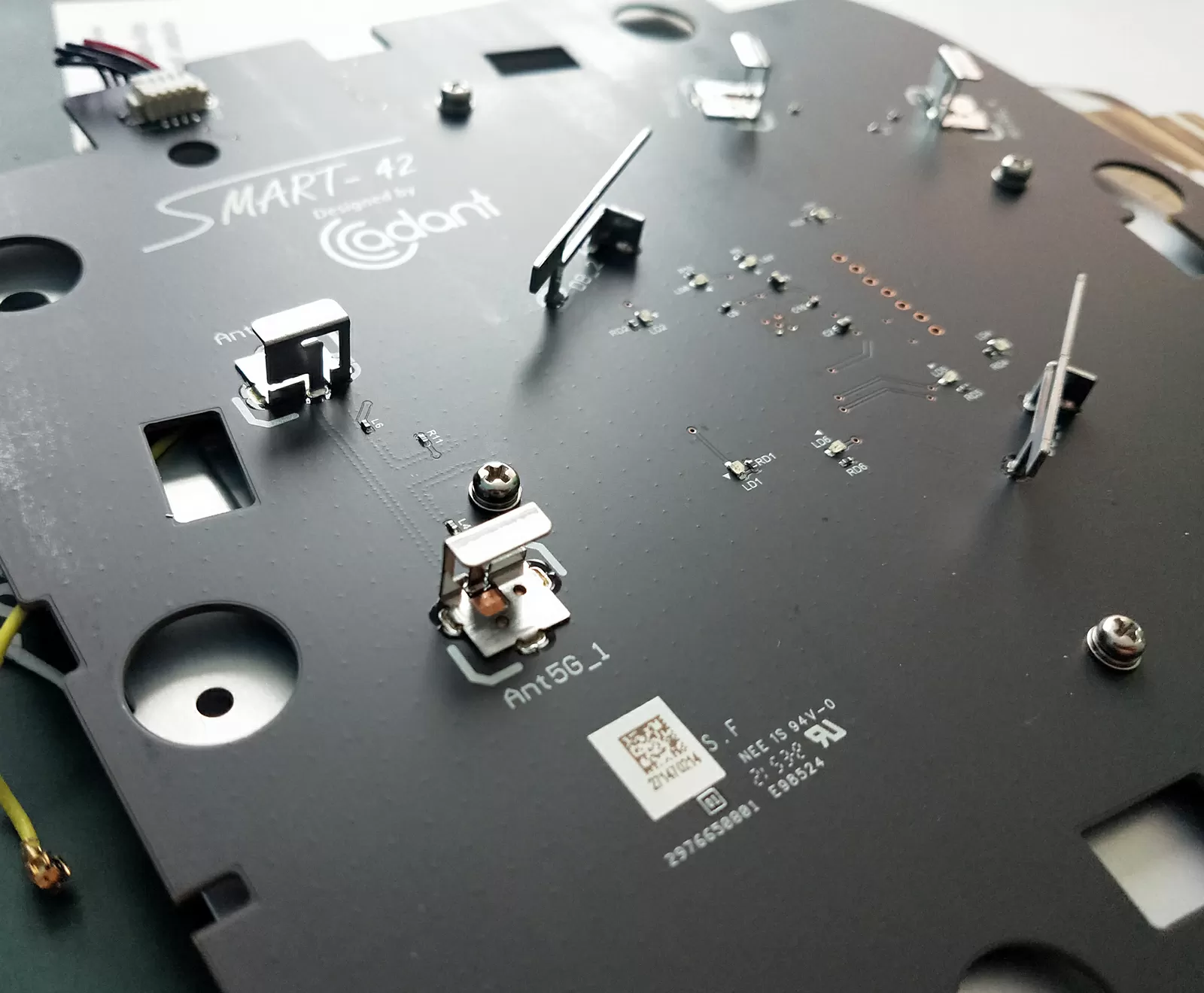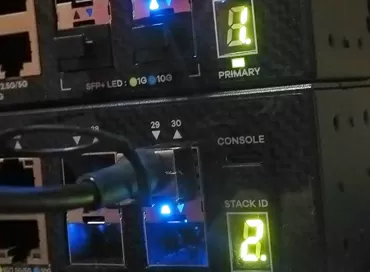Testing smart antenna and beamforming at Zyxel Wi-Fi 6 access points
How does Beamforming work in general
Beamforming technology is the most frequently used function in the new generation of intelligent antennas at Wi-Fi access points 6. The essence of Beamforming technology is that an array of antennas is used to “control” or transmit radio signals in a certain direction, and not just to broadcast energy/signals in all directions, wasting energy. In this method, the phase and amplitude of the transmitted signal of each component antenna are adjusted as needed, which leads to a cumulative or destructive effect, concentrating the total transmitted signal into the target beam, increasing the range of wireless communication.
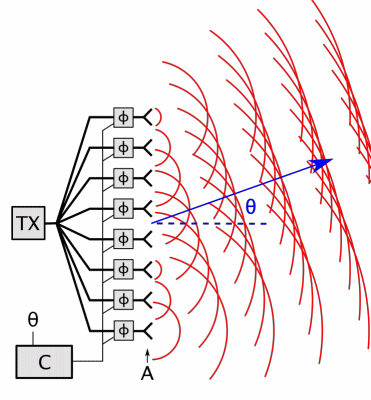
The antenna forming the beam uses several antenna elements to control the direction of the wavefront. By changing the phase of individual signals in the antenna array, the beam can be formed at the desired angle. Then the plane wave can be directed in the desired direction.
When pointing the resulting beam at the target receiving antenna, the distance from each element of the antenna array to the target is slightly different. To compensate for this difference, since each signal from the antenna array element arrives in the same phase, phase shifters are applied to each element, resulting in coherent unification and a coherent beam is obtained.
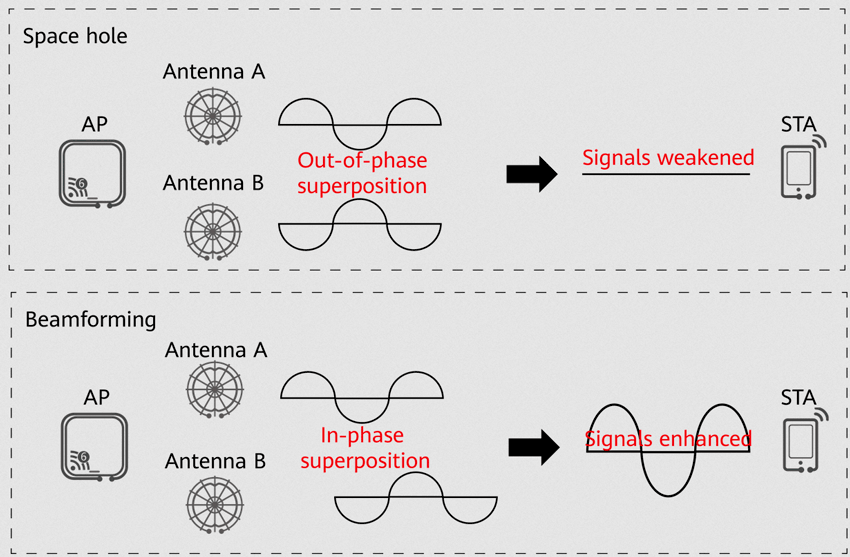
Due to the summing and decreasing effects of combining individual signals in a directional antenna (it is correct to call such effects constructive and destructive interference), the resulting radiation pattern will have many lobes with different field strengths directed at different angles. The main lobe with the highest power is the intended beam, and the smaller side lobes are usually undesirable because they emit unnecessary radiation in unnecessary directions.
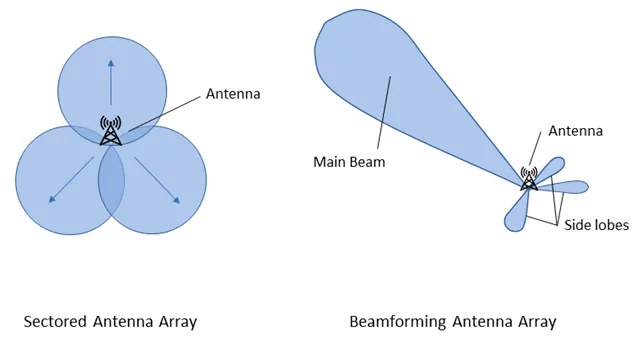
All Wi-Fi 6 devices support beam direction technology: it is available even in the cheapest access points. To further improve the quality of communication, network equipment manufacturers use smart antennas and antenna arrays.
How Smart antennas work in modern access points
Smart antennas are able to analyze their operating conditions and change the radiation pattern, adapting their functions to changing conditions. Intelligent Switchable Beam Direction Antennas (SBA antennas) are designed to combine the signals of multiple antennas to create multiple fixed directional patterns. Then these rays are directed in one or more directions. A typical example of a Wi-Fi access point with a smart SBA antenna is the Zyxel WAX630S (see our review), it has several dozen beam direction options and a simple design of antenna emitters.
An adaptive antenna array consists of many small antennas, each of which has several independently switched antenna elements. Thus, each small antenna can be used as an omnidirectional or directional emitter. How small antennas are combined depends on their gain, polarization, structure and directly determines the number of ultimately formed beams. For example, if there are four antennas installed in the 2.4 GHz band in the device, and each of them consists of four elements, which means a total of 16 antenna elements. Considering that each antenna element can be turned on or off, 65,536 antenna combinations are available in this case.
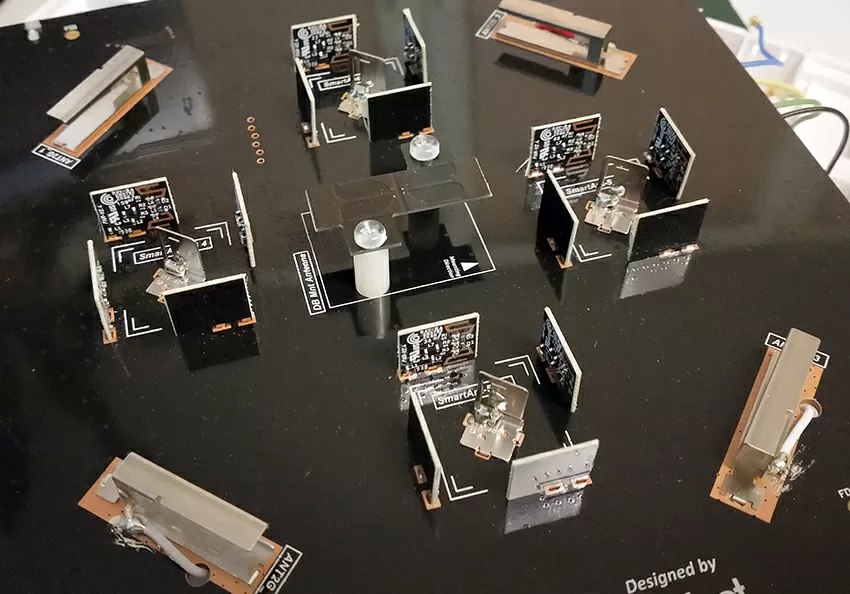
The adaptive antenna array can continuously direct the beam in any direction, use reflected signals and take into account interference from other users. Such antenna arrays require more computing power of the device processor, but they are usually more accurate and efficient compared to models with switchable diagrams, since they can better suppress the parasitic lobes of the radio beam, directing more energy in the right direction, taking into account the path of the reflected signal and finding sources of interference in the direction of radiation. A typical example of an access point with an adaptive antenna is the Zyxel WAX650S.
Please note: Beamforming does not necessarily require a "smart antenna" or an adaptive antenna array. A typical example of an access point with beamforming technology, but without smart antennas is Keenetic Voyager Pro. However, combining beam-forming technology with a smart antenna can significantly increase the range and stability of radio communication, especially in rooms with obstacles in the form of glass walls, columns, furniture and numerous sources of interference, since smart antennas can choose beams to bypass obstacles using reflected signals. In the following picture, you can see how the Wi-Fi signal passes through an obstacle in a regular access point, without a Smart antenna.

And now compare this with how a "smart" antenna uses the reflected signal from the wall to go around an obstacle and get into the client device.

And if we talk quite exaggerated, then Beamforming is a technology that increases the range in large open spaces, and Smart Antenna is a technology for complex room configurations.
How we tested
For testing, we used a rotating platform on which we installed an access point connected to a Zyxel XS1930-12HP multi-gigabit switch. On the client side, a computer with an Intel AX200 adapter was used. I was interested in the maximum performance of the Download to the client when the device is positioned in such a way that it works with the reflected signal in unfavorable conditions for AP: on the reverse side, behind an obstacle and in motion.
What we tested
We have two access points for testing: the top-end Zyxel WAX650S model with BeamForming support and with a Smart antenna that allows you to form up to 65 thousand beam direction combinations. This access point has uniform coverage in vertical and horizontal components, so it can be installed in rooms with low ceilings, and in offices with high furniture.
This type of antenna allows you to form several streams simultaneously for different users and direct them in different directions. Due to the huge number of directional combinations, this is the most accurate antenna currently in existence. In the telecommunications sector, such antennas are commonly referred to as adaptive antenna arrays, or Adaptive Antenna Array (AAA). Their only drawback is the high price.
The second access point is a budget Zyxel WAX610D with a planar antenna that does not change its configuration, but supports Beamforming. This model is prone to vertical polarization, so it should be installed either high under the ceiling, or, if the ceiling height is small, on the wall, pointing the front part towards the customers.
This is a simple antenna, without any electronic logic: we can see from the photos that there are no additional chips on it, which means there is no directional switching of the emitters. The beam forming function is assumed by the main processor of the access point, and the angle between the main and corrective emitters in relation to the client will be the lower, the more the receiving device is shifted relative to the main plane of the antenna. Simply put, I don't expect miracles from this access point, and the further away the receiving device is located from it, the worse Beamforming will work for it.
The third access point is a mid-price model, Zyxel WAX630S with an antenna specially designed for Beamforming technology. As you can see from the photos, it is a cross between WAX650S and WAX610D: two inverted F-L antennas (IFLA) in the middle and 6 vertical polarization antennas directed in different directions for the 5 GHz band. 6 antennas for 4 streams allow switching them to concentrate the radiation pattern in the direction of the client, thus increasing the transmission distance.
Here is a typical example of a Smart antenna without using an antenna array: here the access point controller can switch active emitters, but cannot change their orientation, as in WAX650S. Such an antenna cannot form a beam simultaneously for several users located on different sides of the device. Such antennas have received the name Switched Beam Antenna (SBA), and in the telecommunications sector this is the most common type of emitters.
It should be taken into account here that all wireless clients that support Wi-Fi 5 (802.11ac) or Wi-Fi 6 (802.11ac) should benefit from beamforming technologies and smart antennas, regardless of the connection speed. That is, any 802.11ac/ax device should work equally well when moving around the access point, and when connected to a AP with a smart antenna, it should also confidently catch the signal behind obstacles. By the way, the latter concerns incoming traffic, which, as a rule, prevails in home and office networks.
Test 1 - speed when moving in an arc from the access point
Actually, this is the simplest test for access points: if only the angle between the client device and AP changes, and the configuration of the room does not affect signal propagation, the task of high-quality Wi-Fi equipment is to maintain the same signal level without "dead zones".
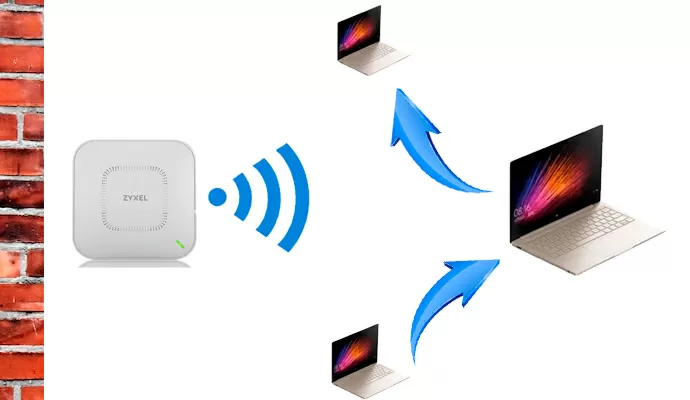
There is a wall behind the access point in all testing cases, so in any case the device will use both a direct and a reflected signal.
In the open space, the advantages of the antenna array are not so significant: if the speed drops by 10% when using SBA, then in the top access point - by 5-7%. At the same time, a traditional antenna with vertical polarization drops the speed “at the edges” by about 1.5 times, that is, what happens is what I assumed in the description of WAX610.
Test 2 - speed over obstacles
In conditions of cramped rooms, most likely the Wi-Fi network will use reflected signals, but access points with Smart antennas can do this consciously, choosing the path of the beam with the best signal strength.
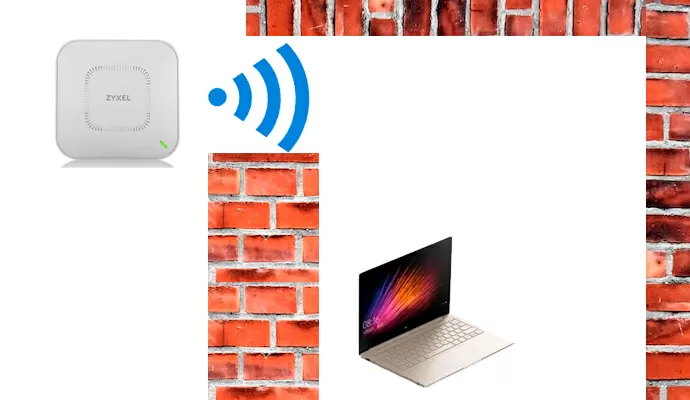
In this test, we need to see the difference between the operation of the beam forming technology and the adaptive antenna array, for which we will install client devices behind a reinforced concrete wall 25 cm thick and 80 cm high.
Surprisingly, when the access point is located facing the client, all three devices show very decent results, because in this case, the client, in general, does not care which of them to work with the reflected signal: the conditions are the same for him.
Test 3 - the client hides behind an obstacle and comes out from behind it
A typical situation: a smartphone, being in the line of sight, moves behind a concrete wall, and then returns back.
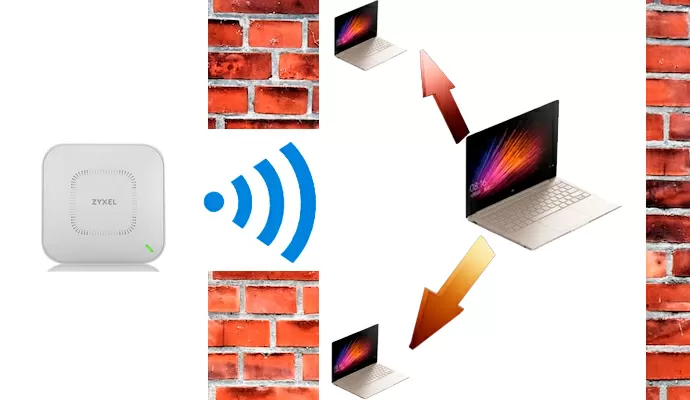
Taking into account the fact that reinforced concrete contributes to the attenuation of the Wi-Fi signal as much as possible, access points should respond to a decrease in its level.
When the access point is located facing the client, the difference between a Smart antenna and a simple beam formation is purely nominal, if at all, but if the client is located diagonally, then yes, more accurate positioning helps to increase the data transfer rate. But the real difference becomes obvious if the client is behind the access point, and works only with the reflected signal: here the "smart antennas" shows itself in all its glory. By the way, for the WAX610 planar antenna, finding the client diagonally from behind is the most difficult case.
Conclusions
In practice, we see that in any case, a model with a "smart antenna" allows you to achieve higher speeds, confidently "punches" through passages in the walls, works well almost 360 degrees. The combination of an adaptive antenna array + paired with beam shaping is the best that the wireless AP industry can offer today. Unfortunately, the high cost of devices leads to the fact that it is more profitable for customers to install more conventional medium access points, getting almost all the same. So, perhaps, the adaptive antenna will leave the stage altogether, even in the top segment.
On the other hand, a simpler SBA antenna (as used in the WAX630S), using the "beam formation" technology, is not much inferior to the top-end analog of the WAX650 with an antenna array, so it is understandable why AP manufacturers prefer simpler antenna configurations to expensive and bulky "smart" antennas, and make them the bid in the average price range. Most likely, there will be more and more such models, and they will actively enter the "top" segment.
The lower price range, in which simple planar antennas are used, can easily lose speed by 30%, depending on the angle of the client's location. In modern offices, where all traffic smoothly switches to Wi-Fi, they can be installed for "shooting" corridors or stairwells, but in any case - where people don't really work, and there are no requirements for the quality of communication.
Michael Degtjarev (aka LIKE OFF)
22/12.2022

